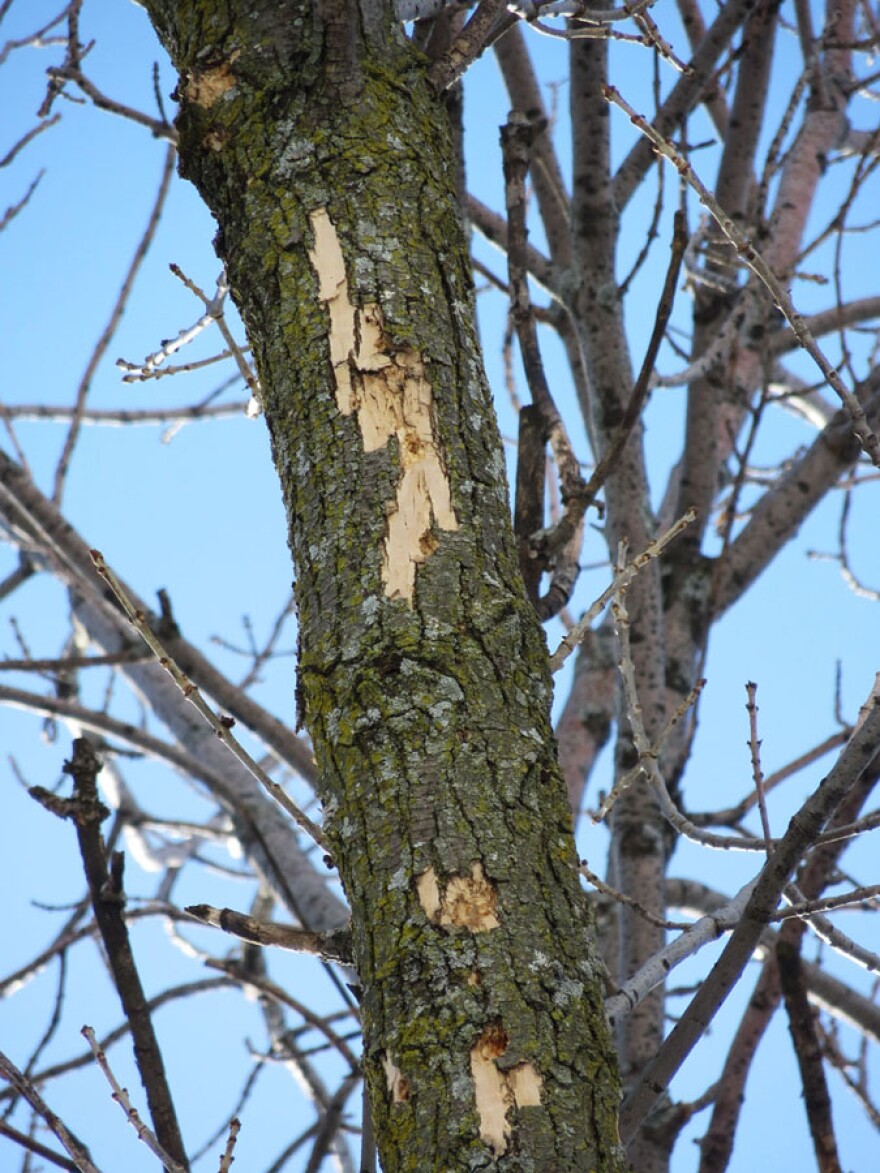A state forest health specialist says winter is a good time to look for signs of an emerald ash borer infestation because woodpeckers will do much of the hunting for those signs.
EAB, as it's known, is an invasive insect that kills ash trees.
The DNR's Andrea Diss-Torrance says the larval, or worm-like, stage of EAB spends the winter months beneath the bark of infested ash trees. Always looking for a tasty meal, here come the woodpeckers..
"..Woodpeckers go after insects that are underneath the bark, EAB as an example. They will flick off the bark during their searching. You can see this because the bark underneath is lighter. It looks like patches of blond bark on trees that are infested and the woodpeckers were hunting on. This points out whether you have borers of some sort underneath the wood...."
Diss-Torrance says by identifying early signs of EAB infestation people can address the problem before their trees become hazardous or too heavily infested for insecticide treatments to be successful. She says trees in the advanced stages are likely on the way to being dead.
Diss-Torrance says most hardwood trees can safely stand for several years after they die, but EAB-infested ash trees can become hazardous even while they are still alive. There have been reports of property damage and injury to people caused by falling ash trees and branches. Removing an infested tree before it becomes a hazard is typically safer and less costly for a property owner.






